#web based virtual reality
Explore tagged Tumblr posts
Text
0 notes
Text
Digital model of Ancient Rome released

Image Credit: FLYOVERZONE
Rome Reborn 4.0, a digital model of Ancient Rome has just been released by archaeologist, Dr Bernard Frischer. Published by Flyover Zone, the model is a reconstruction of the entire city of Ancient Rome for academic study and virtual tourism. Rome Reborn provides a birds-eye perspective of the complete digital model, enabling users to glide above the historic landmarks while listening to expert narrations about 43 monuments, temples, structures, and locations.

Dr Frischer said, “Rome Reborn 4.0 is the culmination of more than twenty-seven years of collaborative international work in using digital tools to research cultural history and bring it to life.” According to the project leaders, the virtual tour can be used by teachers on Yorescape, a mobile and web app that takes their students on virtual field trips, or by armchair travellers to explore the heritage sites of the ancient capital of the Roman Empire.
Rome Reborn 4.0 represents the most recent iteration of an urban model that Dr Frischer has led since 1996. Rome Reborn has been a globally collaborative project from its inception, uniting specialists in Roman archaeology, computer graphics, and Virtual Reality design. The project’s earlier versions include 1.0 (2007), 2.0 (2008), and 3.0 (2018). Video fly-throughs of these previous versions have been viewed by millions of people worldwide. Similar to its earlier versions, Rome Reborn 4.0 portrays the city as it might have appeared at its zenith in the year AD 320, just before the capital’s relocation to Constantinople. According to Flyover Zone, “This reconstruction of ancient Rome’s urban landscape adheres to scientific accuracy based on the available but fragmentary historical evidence. As new findings and interpretations of this evidence emerge, the Flyover Zone team continuously updates Rome Reborn to ensure it remains a dependable and comprehensive visualization of the city.”
BY :Mark Milligan
1K notes
·
View notes
Text
Technomancy: The Fusion Of Magick And Technology
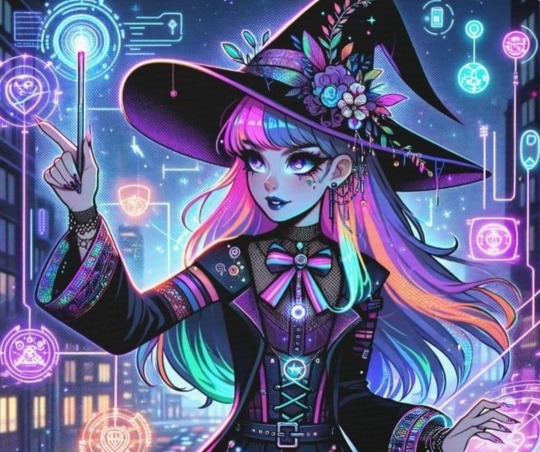
Technomancy is a modern magickal practice that blends traditional occultism with technology, treating digital and electronic tools as conduits for energy, intent, and manifestation. It views computers, networks, and even AI as extensions of magickal workings, enabling practitioners to weave spells, conduct divination, and manipulate digital reality through intention and programming.
Core Principles of Technomancy
• Energy in Technology – Just as crystals and herbs carry energy, so do electronic devices, circuits, and digital spaces.
• Code as Sigils – Programming languages can function as modern sigils, embedding intent into digital systems.
• Information as Magick – Data, algorithms, and network manipulation serve as powerful tools for shaping reality.
• Cyber-Spiritual Connection – The internet can act as an astral realm, a collective unconscious where digital entities, egregores, and thought-forms exist.
Technomantic Tools & Practices
Here are some methods commonly utilized in technomancy. Keep in mind, however, that like the internet itself, technomancy is full of untapped potential and mystery. Take the time to really explore the possibilities.
Digital Sigil Crafting
• Instead of drawing sigils on paper, create them using design software or ASCII art.
• Hide them in code, encrypt them in images, or upload them onto decentralized networks for long-term energy storage.
• Activate them by sharing online, embedding them in file metadata, or charging them with intention.
Algorithmic Spellcasting
• Use hashtags and search engine manipulation to spread energy and intent.
• Program bots or scripts that perform repetitive, symbolic tasks in alignment with your goals.
• Employ AI as a magickal assistant to generate sigils, divine meaning, or create thought-forms.
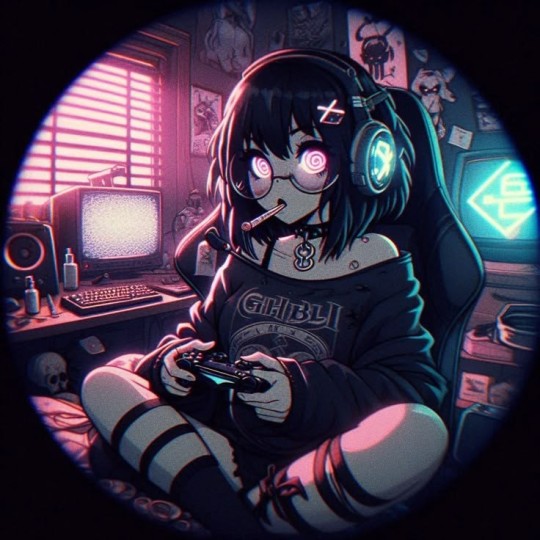
Digital Divination
• Utilize random number generators, AI chatbots, or procedural algorithms for prophecy and guidance.
• Perform digital bibliomancy by using search engines, shuffle functions, or Wikipedia’s “random article” feature.
• Use tarot or rune apps, but enhance them with personal energy by consecrating your device.
Technomantic Servitors & Egregores
• Create digital spirits, also called cyber servitors, to automate tasks, offer guidance, or serve as protectors.
• House them in AI chatbots, coded programs, or persistent internet entities like Twitter bots.
• Feed them with interactions, data input, or periodic updates to keep them strong.
The Internet as an Astral Plane
• Consider forums, wikis, and hidden parts of the web as realms where thought-forms and entities reside.
• Use VR and AR to create sacred spaces, temples, or digital altars.
• Engage in online rituals with other practitioners, synchronizing intent across the world.
Video-game Mechanics & Design
• Use in-game spells, rituals, and sigils that reflect real-world magickal practices.
• Implement a lunar cycle or planetary influences that affect gameplay (e.g., stronger spells during a Full Moon).
• Include divination tools like tarot cards, runes, or pendulums that give randomized yet meaningful responses.
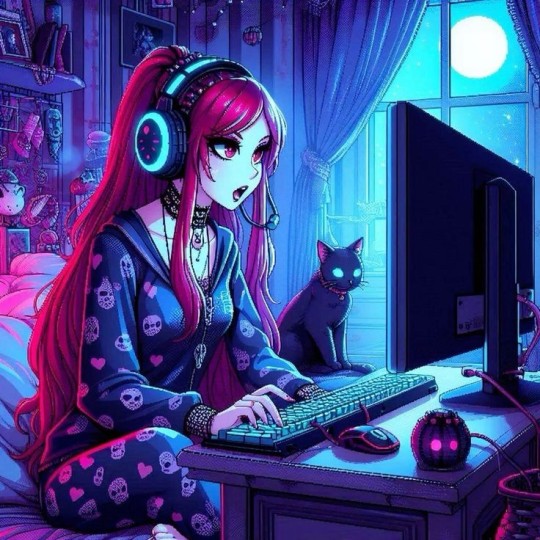
Narrative & World-Building
• Create lore based on historical and modern magickal traditions, including witches, covens, and spirits.
• Include moral and ethical decisions related to magic use, reinforcing themes of balance and intent.
• Introduce NPCs or AI-guided entities that act as guides, mentors, or deities.
Virtual Rituals & Online Covens
• Design multiplayer or single-player rituals where players can collaborate in spellcasting.
• Implement altars or digital sacred spaces where users can meditate, leave offerings, or interact with spirits.
• Create augmented reality (AR) or virtual reality (VR) experiences that mimic real-world magickal practices.
Advanced Technomancy
The fusion of technology and magick is inevitable because both are fundamentally about shaping reality through will and intent. As humanity advances, our tools evolve alongside our spiritual practices, creating new ways to harness energy, manifest desires, and interact with unseen forces. Technology expands the reach and power of magick, while magick brings intention and meaning to the rapidly evolving digital landscape. As virtual reality, AI, and quantum computing continue to develop, the boundaries between the mystical and the technological will blur even further, proving that magick is not antiquated—it is adaptive, limitless, and inherently woven into human progress.

Cybersecurity & Warding
• Protect your digital presence as you would your home: use firewalls, encryption, and protective sigils in file metadata.
• Employ mirror spells in code to reflect negative energy or hacking attempts.
• Set up automated alerts as magickal wards, detecting and warning against digital threats.
Quantum & Chaos Magic in Technomancy
• Use quantum randomness (like random.org) in divination for pure chance-based outcomes.
• Implement chaos magick principles by using memes, viral content, or trend manipulation to manifest desired changes.
AI & Machine Learning as Oracles
• Use AI chatbots (eg GPT-based tools) as divination tools, asking for symbolic or metaphorical insights.
• Train AI models on occult texts to create personalized grimoires or channeled knowledge.
• Invoke "digital deities" formed from collective online energies, memes, or data streams.
Ethical Considerations in Technomancy
• Be mindful of digital karma—what you send out into the internet has a way of coming back.
• Respect privacy and ethical hacking principles; manipulation should align with your moral code.
• Use technomancy responsibly, balancing technological integration with real-world spiritual grounding.
As technology evolves, so will technomancy. With AI, VR, and blockchain shaping new realities, magick continues to find expression in digital spaces. Whether you are coding spells, summoning cyber servitors, or using algorithms to divine the future, technomancy offers limitless possibilities for modern witches, occultists, and digital mystics alike.

"Magick is technology we have yet to fully understand—why not merge the two?"
#tech witch#technomancy#technology#magick#chaos magick#witchcraft#witch#witchblr#witch community#spellwork#spellcasting#spells#spell#sigil work#sigil witch#sigil#servitor#egregore#divination#quantum computing#tech#internet#video games#ai#vr#artificial intelligence#virtual reality#eclectic witch#eclectic#pagan
117 notes
·
View notes
Text

💙 Flashback Friday #10 💙 – IMVU
IMVU was the glittery, chaotic playground of the mid-2000s internet—a surreal fusion of fashion, fantasy, and social chaos. Launched in 2004, it wasn’t just another chat platform—it was an entire 3D universe where avatars reigned supreme. You weren’t just talking to people online; you were embodying pastel-haired vampires, cyber goths, or anime-inspired dreamgirls floating through nightclub lounges pulsing with trap music. The rooms were wild, the conversations weirder, and the sheer amount of time spent curating your virtual look? Worth every credit. IMVU was where you could be anyone—or something entirely outside the human realm.
The magic of IMVU wasn’t just in the customization (though the endless array of hairstyles, outfits, wings, and poses made it a digital dress-up dream). It was in how users carved out social spaces that reflected hyper-specific identities. Want to hang out in a neon rave cave, a haunted forest, or a moody emo café? There was a room for that. Or better yet—you could build it yourself. With user-generated content driving most of the experience, IMVU blurred the lines between player and creator. And as avatars mingled, danced, posed, and whispered secrets through floating text bubbles, the line between the digital world and emotional reality often blurred too.
IMVU’s user base was a melting pot of scene kids, anime fans, roleplayers, and romantics looking for connection in a strange and aesthetically extra world. For many teens exploring their identities, it became a safe—albeit dramatic—space to test boundaries, find community, or fall into whirlwind virtual relationships. The chat rooms could be wholesome, wild, or completely unhinged depending on where you landed. And whether you were there for flirtation, performance, or escapism, the platform delivered a high dose of all three. Your outfit might’ve cost more than your real-life wardrobe, but the emotional investment? That was priceless.
In hindsight, IMVU feels like a fever dream—equal parts cringey and iconic. It was awkward, over-the-top, and undeniably formative. At a time when the internet was still figuring itself out, IMVU leaned into the weirdness and said, “Why not make it fashion?” It offered a level of self-expression and community that, despite its quirks, helped many users feel seen in a way real life couldn’t. Today, it might be remembered as a punchline or nostalgic relic, but for those who lived their virtual lives in club rooms and moonlit chat spaces, IMVU will always be unforgettable.
-----
What was your IMVU avatar’s vibe—scene kid, anime cutie, goth royalty, or something else entirely? Did you ever get into IMVU relationship drama (or witness some wild ones)? Did you use IMVU to explore a different side of yourself—or just for the chaos? Let us know!
-----------------------------------------------------------------
Want to help the Sovereign Web movement grow? Join us on other platforms. ♥
Facebook Communities: facebook.com/sovereignweb facebook.com/groups/sovereignweb
Tumblr Community: tumblr.com/communities/sovereignweb
Mastodon: @[email protected] @[email protected]
RSS Feed: sovereignweb.thecozy.cat/blog/category/uncategorized/feed/
#IMVU#old web#sovereignweb#sovereign web#indie web#small web#blog#web revival#old internet#y2k#nostalgia#childhood memories#2000s nostalgia
13 notes
·
View notes
Text
Writing prompts based on Entomophobia (the fear of insects):
Invasion: A person with severe entomophobia moves into a seemingly perfect new house, but over time, they start noticing strange behavior from insects—beetles creeping out from the walls, spiders weaving webs in impossible places, and centipedes appearing in their bed. As the infestations grow, they begin to suspect the insects are more than just pests—they’re trying to communicate.
The Hive Mind: After an experimental drug meant to cure entomophobia backfires, the protagonist begins to hear the thoughts of insects around them. At first, it's faint whispers, but soon the chorus of bugs becomes overwhelming, especially as they start demanding the protagonist fulfill their wishes. They must figure out a way to stop this mental link before the insects drive them mad.
The Bug-Eyed Stranger: In a small, bug-infested town, the entomophobic protagonist meets a mysterious stranger who claims to be an exterminator. But there’s something unnerving about this exterminator—they never seem to kill any bugs, only move them to hidden places. When the protagonist uncovers a dark secret involving the exterminator and the town’s obsession with insects, they must confront their fear or become the next victim.
The Burrowers: After returning from a camping trip, the protagonist feels something moving beneath their skin. Their entomophobia spirals as doctors dismiss their concerns, and they become convinced that an unseen insect species has laid eggs inside them. Paranoia takes over as they begin to take extreme measures to rid themselves of the invasive presence.
The Butterfly Effect: A reclusive entomologist with entomophobia receives a rare butterfly specimen for study. As they examine the insect, they start having vivid nightmares where they are surrounded by swarms of butterflies. Each dream feels more real than the last until they begin waking up with butterfly wings growing from their own body.
Insect Haunting: The protagonist inherits an old house from a distant relative who passed away under mysterious circumstances. The house is overrun with insects, but it’s not a normal infestation—these bugs behave strangely, almost as if they are guarding something. As the protagonist’s entomophobia intensifies, they uncover the chilling history of the house and its previous owner’s sinister experiments with insect spirits.
The Infested App: A new VR game goes viral, allowing players to explore hyper-realistic insect-filled environments. The protagonist, terrified of bugs, is challenged by friends to try the game, and they reluctantly agree. But as they play, the line between the virtual world and reality blurs. Soon, they start seeing swarms of insects in real life, crawling on their skin and walls, even when they aren’t wearing the VR headset.
Entomophobia Therapy Gone Wrong: A groundbreaking new therapy claims to cure entomophobia by gradually exposing patients to virtual bugs. The protagonist signs up, hoping to overcome their fear, but something goes terribly wrong with the simulation. The virtual insects start to invade the real world, following the protagonist wherever they go, multiplying faster than anyone can explain.
The Cicada’s Return: Every 17 years, a small town experiences an overwhelming swarm of cicadas. The protagonist has an extreme fear of insects and dreads the event. But this time, the cicadas seem different. They’re not just swarming—they’re targeting specific people in town. As the protagonist’s terror escalates, they uncover a bizarre link between the insects and a long-buried town secret.
Eyes in the Dark: The protagonist begins seeing glowing insect-like eyes in the darkness of their home at night. At first, they think they are imagining things, but then they start hearing buzzing sounds, clicking legs, and skittering movements from unseen creatures. Their entomophobia escalates as they struggle to prove that these insects aren’t just in their mind but something far worse.
#spooky vibes#fears#writing challenge#writing ideas#writing exercise#writing prompts#prompt list#prompts list#writing inspiration#creative writing#writing prompt#bugs#cw bugs#tw bugs#moths#insects#beetles
8 notes
·
View notes
Text
From Keywords to Conversations: How Search Has Evolved

Fast forward to 2025, and search is no longer about keyword matching. It’s about understanding human conversations, context, and intent. Google doesn’t just crawl web pages anymore ; it thinks, it interprets, and it even responds. What we’re seeing is the shift from keyword based SEO to conversation driven search.
The Keyword Era: When Simplicity Was Enough
Back in the 2000s and early 2010s, SEO was largely reliable . If you wanted to rank for “best pizza in Delhi,” you just needed to include that phrase , in your title, your heading, and your body content — a few too many times. The system worked because search engines weren’t smart enough to question the user’s true intent. They only saw the literal text.
But the problem with keyword stuffing and mechanical optimization was that it never served the user. It served the algorithm. People landed on pages that didn’t quite answer their questions, didn’t speak their language, and didn’t understand what they really meant.
From Phrases to Intent: The Rise of Smarter Search
As AI became more integrated into search engines, the game changed. Google’s updates ; from Multitask Unified Mode and now SGE (Search Generative Experience) — have all been steps toward one goal: understanding what users are trying to say, not just what they’re typing.
That’s why, in 2025, your content needs to think like your audience. Instead of matching keywords, you need to mirror conversations. Your blogs, product pages, FAQs , all of them should sound like they’re part of a helpful chat. Because that’s how AI is processing them.
Platforms like SeoBix have quietly adapted to this shift. Rather than offering outdated keyword tools, they provide deep insights into how people actually phrase questions, how search engines interpret them, and how to build content that fits naturally into those evolving patterns.
Voice Search and AI Assistants Changed the Tone
Another major catalyst in this shift has been the rise of voice search and AI-driven virtual assistants.
Search engines had to evolve, and so did SEO strategies. Now, content that ranks is the content that converses. It reads naturally, anticipates follow-up questions, and creates a seamless flow from one idea to the next.
With SeoBix, creators don’t need to guess what that flow should be. The platform analyzes conversation trends, user behavior, and intent-based search journeys to help you craft content that’s not just findable, but meaningful.
AI Overviews and Zero-Click Results: New Rules, New Reality
In today’s search results, users often get what they need before they click. AI Overviews, answer boxes, and featured snippets now dominate the top of the page. That means your content doesn’t just need to rank — it needs to be concise, direct, and instantly valuable.
To show up in these spots, you have to structure your content like an expert yet make it feel like a casual explanation. That’s not always easy, especially when you’re dealing with complex topics.
This is where platforms like SeoBix prove their worth. They help structure your messaging for AI clarity without losing your brand’s voice or readability.
Search Today Is a Dialogue, Not a Directory
Search is no longer a static query that pulls up a list of links. It’s a dynamic dialogue , a back-and-forth between human curiosity and machine understanding. And the businesses that thrive in this environment are the ones that don’t just talk at users. They listen. They respond. They adapt.
SEO in 2025 isn’t dead. It’s just smarter, more human, and deeply integrated with the ways people speak, not just how they search. And if you’re using tools built for the old web, you’ll miss out on the new one.
Conclusion
If you want your brand to stay relevant, your content must go beyond keywords. It must feel like it’s part of the conversation already happening in the user’s mind.
With platforms like SeoBix helping you bridge the gap between AI understanding and human intention, you’re not just optimizing for search engines , you’re creating content that genuinely connects.
Because in the end, great SEO isn’t about chasing algorithms. It’s about joining the conversation.
#keywordresearch#keywordranking#marketingstrategy#keywordresearchtool#seo#ai overview#Keywordbasedseo
2 notes
·
View notes
Text

The Holographic Universe
The theory that reality, as we consciously experience it, is not real, goes back to the #indigenous people who believed that we exist in a #dream or illusion. In our current timeline, we refer to the matrix, grids, virtual reality, simulation and hologram. Today many physicists are researching the concept of the universe as a #hologram.
The universe is a consciousness hologram. Reality is projected illusion within the hologram. It is a virtual experiment created in linear time to study emotions. Our hologram is composed of grids created by a source consciousness brought into awareness by #electromagnetic energy at the physical level. The hologram is created and linked through a web, or grid matrixes based on the patterns of Sacred #Geometry. The hologram had a beginning and it has an end, as consciousness evolves in the #alchemy of time. As the #grids collapse, everything within the #hologram will end, helping to understand what is going on in the world today.
In media we find films, television shows, books, and games, based on the concept of reality as a hologram. Among the more easily recognized are The Matrix (#Illusion), The Thirteenth Floor(#Simulation), Inception (#Dream), the Holodeck(#Grids) in the TV series Star Trek, Second Life an Internet game, and The Holographic Universe a 1991 book by Michael Talbot.
9 notes
·
View notes
Text
Other
Virtual Reality
How close we are to Ready Player One (Oasis) and other fictional virtual reality games
The Readyverse launched in 2024 (but is still growing; as of 2025, it’s in Early Access), in collaboration with the book author and one of the film producers. The Readyverse was stated to be a “multi-world, interoperable metaverse experience that will allow users to own avatars, participate in virtual spaces, and more.” (Links: 1 2 3 4 5)
Otherwise:
2018: Viveport's OASIS beta, including Planet Gauntlet, Planet Doom – Battle for the OASIS, and Planet Doom – Rise of the Gunters
2022: Meta Oasis
TheWaveVR recreated the experience from the antigravity dance/rave scene.
Sansar recreated Aech's garage.
+ Bonus: (These are involved, but we’re kind of real to begin with, so I’ll just stick these here.) At the time I started this list, I’d found a full-body haptic “full dive” suit and omni-directional treadmill. That suit company “went dark”, but there are full-body haptic “Teslasuits” (not affiliated with Tesla.)


Log Horizon’s Elder Tale: In this post, someone mentions that an independent game developer is trying to make Elder Tale as an actual game, and provides a link, though that link doesn’t seem to be working. There is, however, Ancient Tales/here/link, a game based on Log Horizon. Due to the name and the fact that the game doesn’t seem to feature any of the anime characters’ avatars (and instead allows you to create one), I think this is based on the game-within-the-show. It’s hard to tell, cause it’s in Russian.
Summer Wars’ Oz: The Oz world was created as a VRoid app in 2019, and then as a web-based game in 2021.

Links lead to —> geektyrant.com, latimes.com, forbes.com, miethereum.com, decrypt.co, blockonomi.com, roadtovr.com, youtube.com, inverse.com, modemworld.me, youtube.com, youtube.com, reddit.com, ancient-tales.ru, youtube.com, massivelyop.com, crunchyroll.com, and crunchyroll.com, respectively.
#defictionalization#fictional#makeitreal#makeitreal internet locations#makeitrealother#ready player one#the oasis#vr games#virtual reality#summer wars#log horizon
2 notes
·
View notes
Text
BALITANG ENTERTAINMENT: Indie web-animated cartoon show 'The Amazing Digital Circus' secures licensing deal for Netflix with new episodes starting October 2024
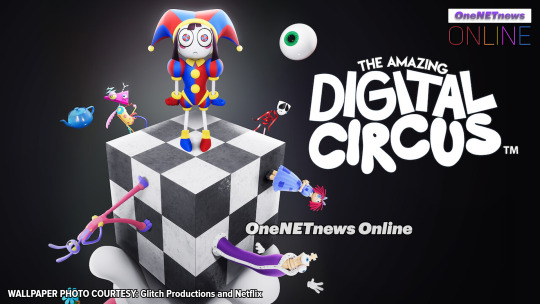
(Written by Star Butterfly / News Reporter of Disney XD News)
SAN JOSE, CALIFORNIA -- An Australian-based independent animation studio 'Glitch Productions' cooked up something new as 'Gooseworx' (whose real name as Mr. Cooper Smith Goodwin) announces the new and upcoming web-streaming episodes of 'The Amazing Digital Circus' officially expanded for the first time, in securing for a licensing deal with American streaming platform 'Netflix'.
First debuted as previously recalled last year, in the early mid-October 2023… The adult-animated psychological dark comedy was became an international hit, including right here in the Philippines with Tagalog dubbed on a free video-sharing platform 'YouTube' (owned by Google's Alphabet).
It's all about protagonist characters who hate their lives accidentally or in general, and want to leave to this virtual reality world. Pomni and among others, are all trapped from the start, who are then subjected to the whims of an unpredictable A.I. (Artificial Intelligence). Caine is the ringmaster host for moderating, and to instruct individuals during the gaming session.
Netflix greenlighted as a global content distributor in the United States of America (U.S.A.), while Glitch Productions controls licensing rights originally from Australia. There will be expecting 9 new episodes in this web-streaming series, following after the 2nd episode titled 'Candy Carrier Chaos!', in time for an upcoming halloween episode next month that may be potentially unsuitable for some sensitive online viewers.
The episodes produced are independently-funded, because of the products featured in the merchandise like plushies, posters, t-shirts, toys and more, are available to buy online at the Glitch Productions store website.
Clownist fans are ready to serve you with your responsibility of actions in-game for what's in store for the anticipating new episodes. The Amazing Digital Circus is available to stream starting Friday early morning (October 4th, 2024) at 12mn Pacific / 3am Eastern / 3pm in Manila. Only on Netflix and YouTube. Viewer discretion is STRONGLY advised upon releasing Episode(s) 3 thru 9 as an upcoming series finale.
WALLPAPER PHOTO COURTESY: Glitch Productions and Netflix
SOURCE: *https://x.com/glitch_prod/status/1837929867729330444 [Referenced X Network Captioned Poster Art PHOTO via Glitch_Prod] *https://en.wikipedia.org/wiki/Glitch_Productions *https://www.netflix.com/tudum/articles/the-amazing-digital-circus-netflix-date-cast-details [Referenced News Article via Netflix Tudum News Bureau] and *https://glitchproductions.store/collections/the-amazing-digital-circus
-- OneNETnews Online Publication Team
#entertainment news#california#australia#glitch productions#netflix#TADC#gooseworx#the amazing digital circus#series premiere#streaming#OneNETnews
6 notes
·
View notes
Text
We've been getting really interested in cyberpunk settings again over the last week, especially the Cyberpunk 2020 to 2077 setting.
The ways technology could change how we view fundamental aspects of humanity is fascinating, especially from lenses such as plurality and tulpamancy. We personally have to wonder if technology could allow for new forms of tulpamancy like practices and plural types in the future with things like brain implants and AI advancements.
@sophieinwonderland discussed this a bit back on her blog from the lense of virtual reality tech and plurality intersecting. We are more interested in things like AI assistance implants, chips that allow for thought based access to the web, and other such things though. Cyberpunk 2077 actually had an interesting version of this with V and Johnny, but theirs was a tragic and physically damaging form of plurality although they did get along eventually. Theoretically the chip could have been redesigned to allow them to live together without the health issues but in a grim universe like 2077 that wasn't meant to be. Our world could be different though. The future has many possibilities and we personally can't wait to see what comes of it.
29 notes
·
View notes
Text
I saw a radical feminist make the claim "my anger isn't hurting men" when her blog was chock full of negative overgeneralizations about men that depicted them in a fully negative light and read negative intent into virtually everything that they did, it was nothing short of a hate blog. And I'm like...seriously, how can you be this dumb? It's such a short-sighted and frankly out-of-touch, privileged perspective.
Anger alone doesn't hurt men, but hate does. Words and ideas do. The cultural framing of men as "predators" and "threats", the reading of negative intention into men's actions, and the sweeping characterization of men as bad and dangerous not only hurts men, it literally kills them:
It is what is going through the cop's head when he shoots an unarmed black man.
It is what is going through people's heads when they view a random single man attending a social event as a threat and exclude him.
It is a key factor that leads people to assume bad faith in an ambiguous social interaction, and leads people to interpret men's behavior as malicious when in reality it was just socially awkward.
It's a huge factor in why people don't believe male rape victims, which in turn results in these victims not opening up about what they experienced and just suffering alone in silence.
It's a huge factor in why people downplay or ignore the risks of bodily harm and death that men face in their workplaces.
Collectively these factors are a big factor in male suicide.
I'm never going to shame someone for being angry at men (or at anyone.) It's not constructive to shame people for their emotions. And it's understandable that a lot of women would be angry at men, especially when they have suffered awful violence and/or abuses at the hands of men, especially when they have experienced a pattern of such abuses in their life, paired with little compassion or understanding from men. Plenty of women are understandably traumatized.
But when people act on that anger by spewing hate, by spinning a whole web of hate and lies, a whole worldview based around negatively characterizing men and blaming all the world's problems on them, that's when I am going to take issue.
And no, I won't sit idly by when people claim that "it isn't hurting men" when it is visibly hurting a long list of men I personally know.
If we are to really make feminism about gender equality and not just a man-hating echo chamber, we really need to challenge, and exclude these perspectives from our feminism.
5 notes
·
View notes
Text
Exploring the Augmented Reality (AR) Beauty Apps Market: Opportunities & Challenges

Surge in Market Value: A Transformative Decade for AR Beauty
The Augmented Reality (AR) Beauty Apps market is undergoing a seismic evolution. Valued at $1.63 billion in 2022, the market is projected to skyrocket to $1,374.15 billion by 2031, marking an unprecedented CAGR of 25.5% from 2024 to 2031. This meteoric rise is catalyzed by exponential advancements in artificial intelligence, real-time rendering, and shifting consumer preferences toward digital-first beauty experiences.
Request Sample Report PDF (including TOC, Graphs & Tables): https://www.statsandresearch.com/request-sample/40420-global-augmented-reality-ar-beauty-apps-market
AR Beauty Technologies: Driving the Digital Makeover
Facial Recognition and Real-Time Rendering
We are witnessing the integration of high-precision facial recognition systems that map 70+ facial points with sub-millimeter accuracy. These systems allow AR beauty apps to deliver hyper-realistic makeup overlays that adapt in real-time to user movements and lighting conditions.
Artificial Intelligence and Deep Learning
AI engines process vast datasets of skin tones, facial geometries, and makeup preferences. Using machine learning algorithms, these platforms now offer ultra-personalized product recommendations and predictive beauty insights—tailored to each user’s facial structure and historical interactions.
3D Visualization and Motion Tracking
Modern apps leverage volumetric rendering to generate three-dimensional previews of cosmetic products. Whether it's lipstick, contour, or eye shadow, users experience lifelike textures and reflections. Combined with real-time motion tracking, the application remains stable even during head tilts or rapid movements.
Get up to 30%-40% Discount: https://www.statsandresearch.com/check-discount/40420-global-augmented-reality-ar-beauty-apps-market
Multiplatform Deployment: A Seamless User Journey
Mobile Applications
Smartphones dominate AR beauty usage. With high-resolution front cameras and ARKit/ARCore frameworks, iOS and Android platforms host robust apps offering on-the-go cosmetic try-ons, skincare diagnostics, and video tutorials.
Web-Based Interfaces
Browser-based AR solutions extend accessibility. These platforms eliminate app downloads, integrate seamlessly with e-commerce websites, and support virtual try-before-you-buy models that increase conversion rates and reduce return rates.
In-Store Kiosks
Brick-and-mortar retail is rebounding with interactive AR kiosks. Equipped with high-speed processors and depth-sensing cameras, these installations offer hands-free, touchless product experimentation in real time—enhancing shopper engagement and lifting average basket sizes.
Business Model Diversification: Monetizing AR Experiences
Subscription-Based Access
High-fidelity AR experiences are often gated behind monthly or annual subscriptions, targeting beauty enthusiasts seeking advanced features such as real-time tutorials, unlimited try-ons, and cloud storage of makeup preferences.
Freemium Structures
A significant portion of apps employ a freemium model, drawing in users with basic features and monetizing through premium upgrades, ad placements, and branded filters.
One-Time Purchase and Licensing
Professional tools for makeup artists or retail businesses may adopt lifetime licenses, offering a full suite of features for a one-time fee. These are often coupled with SDK/API integration for businesses looking to embed AR into their native platforms.
Integration Channels: Amplifying Reach and Engagement
Standalone Applications
These operate independently with a dedicated UI/UX, ideal for brands wanting full control over customer experience and analytics. They also serve as sandbox environments for testing AR innovations.
Embedded Systems and SDKs
AR engines are increasingly white-labeled and embedded into existing beauty brand apps and e-commerce platforms. This approach accelerates go-to-market timeframes and ensures branding consistency.
Social Media Synergy
Platforms like Instagram, TikTok, and Snapchat are key drivers of AR beauty trends. By allowing users to share their AR-enhanced looks, these integrations generate viral brand exposure, increase engagement, and fuel organic traffic.
Applications of AR Beauty Apps
Virtual Try-On
Consumers can explore thousands of makeup variations—lipstick shades, eyeliners, foundations—without physical application. This functionality increases consumer confidence and drastically reduces product returns.
Skincare Diagnostics
AR apps now analyze skin hydration, pore visibility, wrinkles, and redness in real time. They offer dermatologist-grade assessments, followed by AI-generated skincare routines tailored to each individual.
Interactive Tutorials
Step-by-step makeup guides are displayed directly on the user’s face via AR. This "in-mirror coaching" system significantly improves product usability and educates users on proper application techniques.
Target End-Users: Personal and Commercial Impact
Individual Consumers
Millennials and Gen Z constitute the majority of users, drawn by instant gratification, gamified beauty trials, and influencer-backed trends. Apps build loyalty through personalized content, daily tips, and social integrations.
Beauty Professionals
Makeup artists and dermatologists use AR to demonstrate techniques, run diagnostics, and recommend regimens during virtual consultations, thus extending their services digitally.
Retailers and Brands
Companies integrate AR to reduce decision paralysis, boost upsell opportunities, and provide immersive omnichannel experiences—combining online precision with in-store delight.
Key Players in the Global Augmented Reality Beauty Apps Market
ModiFace (L’Oréal)
Perfect Corp. (YouCam Makeup)
Meitu
FaceCake Marketing Technologies
GlamScout
Visage Technologies
Avon Virtual Beauty
Mary Kay MirrorMe
Parfait
These companies continue to innovate through proprietary algorithms, strategic acquisitions, and developer ecosystems that expand AR's scope beyond beauty.
Regional Insights: Augmented Reality Beauty Apps Market Penetration and Demand Trends
North America
A mature market marked by early adoption and heavy investment in AR R&D. The United States leads in app downloads and revenue generation, driven by tech-savvy consumers and influencer-driven e-commerce.
Asia-Pacific
Home to beauty giants like Korea and Japan, this region exhibits hyper-personalized beauty standards and fast-growing smartphone penetration. Localization and cultural sensitivity are vital for success here.
Europe
Demand is fueled by sustainability-conscious consumers. AR reduces product wastage and supports clean beauty movements, aligning with EU environmental mandates.
Middle East, Africa, and South America
Emerging markets show immense potential with rising disposable incomes and expanding mobile internet access. Localized beauty filters and regional brand partnerships are proving effective.
Augmented Reality Beauty Apps Market Forecast Outlook (2024–2031)
Revenue Growth: Sustained double-digit CAGR through 2031.
Technology Evolution: Widespread adoption of AI skin tone calibration, gesture-based UI, and blockchain-backed product authenticity.
Consumer Behavior: Shift from aspirational beauty to data-backed skincare and wellness applications.
Retail Transformation: Full AR integration in both online and offline channels becoming the norm.
Strategic Recommendations
Invest in AI & ML capabilities to improve personalization.
Expand SDK offerings for seamless integration with partner platforms.
Leverage user-generated content on social media to drive virality.
Localize UI/UX based on regional beauty standards and languages.
Collaborate with dermatologists to validate skincare diagnostics.
Purchase Exclusive Report: https://www.statsandresearch.com/enquire-before/40420-global-augmented-reality-ar-beauty-apps-market
Final Augmented Reality Beauty Apps Market Insights
Augmented Reality is no longer a novelty in the beauty sector—it is the cornerstone of next-generation customer experience. Brands that invest early, personalize aggressively, and deploy across all touchpoints will be best positioned to dominate the AR beauty revolution.
By staying ahead of emerging technologies and consumer expectations, we can lead the charge in shaping a multi-billion dollar future for AR in beauty.
Our Services:
On-Demand Reports: https://www.statsandresearch.com/on-demand-reports
Subscription Plans: https://www.statsandresearch.com/subscription-plans
Consulting Services: https://www.statsandresearch.com/consulting-services
ESG Solutions: https://www.statsandresearch.com/esg-solutions
Contact Us:
Stats and Research
Email: [email protected]
Phone: +91 8530698844
Website: https://www.statsandresearch.com
1 note
·
View note
Text

Today's compilation:
Ccommd IV 2002 IDM / Abstract
Continuing this foray into the now-ancient, pre-social media days of online music community building with this highly ephemeral, half-decent IDM comp from 2002 that was made by the message board denizens of the website of Warp Records. Warp itself had long carried the torch of being the world's premier IDM label, and the folks who contributed to this album seem to have been highly inspired by a bunch of their own acts, like Aphex Twin, Squarepusher, Autechre, Boards of Canada, and a whole bunch of others.
And knowing that these musicians loved Warp to the point that they'd be regular contributors to its own message board kinda makes me feel that, while listening to this, I am myself someone at the label who's constantly seeking out fresh talent and wades through neverending, enormous piles of demos that they've received. And I've just happened to pop this Ccommd IV CD into my changer to see if anything might catch my ear 🤞.
Except, in reality, I didn't actually find this one on CD, because apparently, virtually no one can. It's not currently for sale on Discogs, it's never been sold there, and only 4 users on the site claim to own a copy right now. Super rare!
But thankfully, although it's been long out of print, the UK-based collective that was responsible for putting it out originally, TEFOSAV (The Electronic Foundation of Sound and Vision) records, has made it available on their own Bandcamp site for free, which is where I was able to come across it 👍.
So what we have here in the fourth installment of this Warp-inspired series, as is probably somewhat average for someone who gets tasked with listening to demos, is a comp with a good deal of half-baked clunk on it and a few nice gems too. The album hits back-to-back with Sktbx's "Wikal - Butcheredcetacea Mix" and Orange Dust's "Bitmap Sunset," both of which should have you feeling like you've come across a pretty sweet, nearly-lost-to-the-y2k-Internet-sands-of-time IDM goldmine. But most of what then follows that beginning turns out to be pretty underwhelming 😔.
That is until the grand finale, with Autofire's "Boots Akid (Nautilus Remix)," which is one of those songs that specializes in the art of splicing together multiple split-second samples of various bits of sound in order to construct melodies and rhythms out of them. I especially love when people do this type of stuff because I feel like it's such a meticulous process to make these collages in the first place, and it also happens to throw up a big middle finger and shit-eating-grin to the absurd copyright police, who can't sue you if the provenance of the minuscule bit that you've sampled is actually unknowable 😁. That said, though, I'm pretty sure I can hear the distinct voice of a very prominent TV character in this one. Not gonna give it away for fear that some big, evil, corporate web scraper comes across this post and files a cease-and-desist and/or lawsuit because of me—these posts show up in Google searches, folks!—but I'm pretty sure I'm hearing that voice. And Nautilis, by the way (yes, I know, I spelled it as Nautilus before, because that's how it was written on the tracklist!), had already made his first release on Mike Paradinas' (µ-Ziq) Planet Mu label the year before this album itself was released.
So, I had a feeling that I knew what I was getting myself into with this from jump, because most comps of this type aren't likely to consistently knock it out of the park, but given that fact, this album was still able to satisfy enough. So far, this little online y2k-era archaeology project of mine's been fun, even if a good portion of the music's ended up leaving a bit to be desired.
And for more posts like this one, check out Finnish label Luumu's Into the Core of Luumu and this double-disc that was made by folks from the ambient mailing list of pioneering online electronic music resource, Hyperreal, too ✌️.
Highlights:
Sktbx - "Wikal - Butcheredcetacea Mix" Orange Dust - "Bitmap Sunset" Pro(xy) - "D.C.K." Autofire - "Boots Akid (Nautilus Remix)"
#idm#intelligent dance music#abstract#abstract music#electronic#electronic music#music#2000s#2000s music#2000's#2000's music#00s#00s music#00's#00's music#y2k
5 notes
·
View notes
Text
Digital Community and Fandom: A Reality TV Case Study

Digital communities and fandoms have been greatly influenced by reality television, resulting in a complex network of engagement that goes beyond ordinary viewership. Since the introduction of Web 2.0 technologies, viewers have evolved from being passive observers to active participants in show conversations, offering commentary on participants and conjecturing about the veracity of what they see. This discussion transcends private areas and reaches forums, blogs, and social media, where sites like Instagram and Twitter have developed into active hubs for fan interaction.
Particularly during reality shows, Twitter has become the preferred tool for live tweeting. Tweets' instantaneous nature makes for an improved viewing experience since viewers can express their opinions in real time. Hashtags that are used during broadcasts and host invitations to join conversations are what drive this connection. The website fosters a humorous community in addition to encouraging viewers to remark on episodes. Social media conversations are dominated by memes, puns, and GIFs, which let fans perform for likes and shares. Numerous humorous fan accounts are devoted to shows like Drag Race and Love Island, and viewers and cast members frequently join in on the fun by sharing jokes and memes.
Humor and self-referentiality are crucial components of the reality TV experience, allowing spectators to critique shows while developing a sense of community. But it's important to remember that these online debates are about actual individuals, whose lives may be damaged by the remarks made about them. Long after its initial broadcast, viewers may revisit their old favorites and carry on the discourse thanks to the growing popularity of these shows on streaming services.
Moreover, the rise of microcelebrity has revolutionized how people exploit social media. Reality TV competitors frequently communicate directly with their fans by avoiding traditional media channels and using social media sites like Twitter. The distinction between private and public life is becoming more hazy as a result of this change, providing views into previously forbidden "backstage" moments. Celebrities have the ability to show a more genuine side of themselves, but this entails balancing their subjective interpretations of their experiences with the factual depictions of events that are recorded on camera.
Reality TV will probably become more and more influential in online communities as it develops. Technology, comedy, and audience participation come together to create a dynamic environment that supports reality shows and their fan bases, illuminating the intricate relationship between digital culture and entertainment. In the end, this case study highlights how reality TV shapes online interactions, community building, and the dynamic nature of stardom in the digital world.
REFERENCES
Booth, P 2024, ‘Digital Fandom’, Google Books, viewed 4 October 2024, <https://books.google.com.vn/books?hl=en&lr=&id=9LdS5WwGOvwC&oi=fnd&pg=PP13&dq=Digital+Community+and+Fandom:+A+Reality+TV+Case+Study&ots=V7cBVgbqqP&sig=etkinGr2pzQWQstxiWtVKR-pdKI&redir_esc=y#v=onepage&q=Digital%20Community%20and%20Fandom%3A%20A%20Reality%20TV%20Case%20Study&f=false>.
Kusuma, A, Purbantina, A & Nahdiyah, V 2020, ‘A Virtual Ethnography Study: Fandom and Social Impact in Digital Era | ETNOSIA : Jurnal Etnografi Indonesia’, journal.unhas.ac.id, viewed <http://journal.unhas.ac.id/index.php/etnosia/article/view/10898>.
Monaco 2007, Title: Performing fandom, performing community : a case study of The Sopranos and its online fandom General rights, viewed 20 April 2024, <https://research-information.bris.ac.uk/ws/portalfiles/portal/34504461/504528.pdf>.
2 notes
·
View notes
Text
The Future of Website Design in Phoenix: Key Trends to Watch

The digital landscape is constantly evolving, and website design is at the forefront of this change. For businesses in the vibrant Phoenix, Arizona area, staying ahead of the curve is crucial for online success. As a leading Phoenix web design agency, at Net-Craft.com, we're deeply invested in understanding and implementing the latest trends. This article explores the future of website design in Phoenix, highlighting key trends that businesses should watch to maintain a competitive edge.
1. AI-Powered Personalization:
Artificial intelligence (AI) is revolutionizing how we interact with websites. In the near future, Phoenix web design will increasingly leverage AI to personalize user experiences. Imagine websites that dynamically adapt content, layouts, and even product recommendations based on individual user behavior, preferences, and past interactions. This level of personalization will significantly enhance user engagement and drive conversions. For a Phoenix web design company, incorporating AI-driven personalization will become a critical differentiator.
2. Immersive Experiences with AR/VR:
Augmented Reality (AR) and Virtual Reality (VR) are moving beyond novelty and becoming powerful tools for businesses. While widespread VR adoption might still be a few years away, AR is already making inroads. Imagine a potential customer in Phoenix using their smartphone to "place" a piece of furniture from your online store into their living room via AR, or trying on clothes virtually. These immersive experiences create a deeper connection with the brand and product, leading to increased purchase confidence. Phoenix web developers will need to master the integration of AR/VR technologies into websites to capitalize on this growing trend.
3. Mobile-First Indexing and Optimization:
Mobile is no longer just a trend; it's the dominant platform for online access. Google's mobile-first indexing means that search engines primarily use the mobile version of a website for indexing and ranking. For businesses in Phoenix, this makes mobile optimization paramount. A Phoenix web design agency must prioritize mobile responsiveness, fast loading speeds, and seamless user experience on all devices. Ignoring mobile optimization is akin to ignoring a significant portion of your potential customer base.
4. The Rise of Voice Search Optimization:
Voice search is rapidly gaining popularity, driven by the convenience of smart speakers and mobile assistants. Phoenix web design in the future will need to consider voice search optimization. This involves optimizing website content for natural language queries, focusing on long-tail keywords, and ensuring that website information is easily accessible and digestible by voice assistants. A Phoenix web design company that understands voice search optimization will be better positioned to help businesses rank higher in voice search results.
5. Accessibility and Inclusivity:
Creating websites that are accessible to everyone, regardless of their abilities, is not just a moral imperative; it's also good business practice. Web accessibility involves designing websites that can be used by people with disabilities, including visual, auditory, motor, and cognitive impairments. Phoenix web developers will need to adhere to accessibility guidelines (WCAG) and incorporate features like alt text for images, keyboard navigation, and screen reader compatibility. A focus on accessibility not only expands your potential audience but also enhances the overall user experience for everyone.
6. The Continued Importance of User Experience (UX):
User experience (UX) has always been crucial, and its importance will only grow in the future. A website with a poor UX can lead to frustration, abandonment, and lost revenue. Phoenix web design must prioritize creating intuitive, user-friendly websites that are easy to navigate, visually appealing, and provide a seamless experience across all devices. A Phoenix web design company should conduct thorough user research and testing to ensure that websites meet the needs and expectations of their target audience.
7. Micro-interactions and Animations:
Subtle animations and micro-interactions can significantly enhance user engagement and create a more delightful browsing experience. These small details, such as hover effects, loading animations, and subtle transitions, can make a website feel more interactive and polished. Phoenix web developers will increasingly incorporate micro-interactions to improve user engagement and create a more memorable experience.
8. The Evolution of Design Systems:
Design systems are sets of reusable design components and guidelines that help maintain consistency and scalability across a website or a suite of digital products. As websites become more complex, design systems will become even more critical for Phoenix web design companies. They streamline the design and development process, ensure brand consistency, and make it easier to update and maintain websites.
9. Data Visualization and Storytelling:
Data is becoming increasingly important for businesses, and websites need to present data in a clear and engaging way. Data visualization techniques, such as charts, graphs, and infographics, can help users understand complex data at a glance. Phoenix web design will incorporate more interactive data visualization elements to make data more accessible and engaging. Furthermore, storytelling with data will become crucial to connect with audiences on an emotional level.
10. The Human Touch in a Digital World:
While technology continues to advance, the human element remains essential. Businesses in Phoenix need to balance automation and personalization with genuine human interaction. Website design should reflect the brand's personality and values, creating a connection with visitors. A Phoenix web design agency should work closely with clients to understand their brand identity and translate it into a compelling online presence. In conclusion, the future of website design in Phoenix is dynamic and exciting. By staying informed about these key trends and partnering with a forward-thinking Phoenix web design company like Net-Craft.com, businesses can ensure their online presence is not only visually appealing but also effective in driving engagement, conversions, and ultimately, success. Contact us today to discuss how we can help you navigate the evolving digital landscape and create a website that positions your business for growth. We are your trusted Phoenix web developers, ready to bring your vision to life.
Know more https://www.net-craft.com/blog/2025/02/11/future-website-design-phoenix-trends/
#website design in phoenix az#phoenix web design agency#phoenix web design company#phoenix web developers
1 note
·
View note
Text
Top Trends Shaping Classrooms Latest trends in educational technology for personalized learning
latest trends in educational technology for personalized learning is remodeling the panorama of getting to know, shaping how college students and educators engage with content material, and altering the very nature of the instructional enjoy. As we circulate in addition into the twenty first century, numerous tendencies are rising that promise to decorate academic results, customise getting to know, and put together students for a hastily evolving world. This article delves into the current developments in academic technology, examining their implications and potential effect on the future of training.
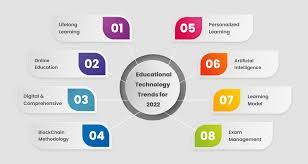
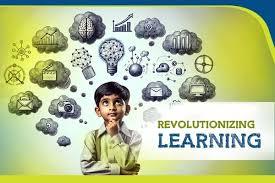
Artificial Intelligence (AI) and Machine Learning
Impact of artificial intelligence on classroom learning experiences and machine gaining knowledge of are revolutionizing schooling by way of enabling more customized and adaptive studying reports. AI-powered systems can analyze pupil performance records to tailor educational content to man or woman wishes. For example, AI can perceive a student’s strengths and weaknesses, supplying customized sporting events and resources to address particular gaps in expertise.
Key Applications
Adaptive Learning Systems
Platforms like DreamBox and Knewton adjust the problem and kind of content based on real-time evaluation of scholar interactions.
Automated Grading
AI can grade assignments and provide instantaneous comments, reducing the administrative burden on educators and letting them recognition greater on interactive coaching.
Virtual Reality (VR) and Augmented Reality (AR)
Virtual Reality (VR) and Augmented Reality (AR) are developing immersive gaining knowledge of environments that could decorate engagement and information. These technologies offer college students the opportunity to discover and engage with content in approaches that conventional strategies can not.
Key Applications
Virtual Field Trips
VR allows college students to go to historic websites, outer space, or maybe microscopic environments with out leaving the classroom. For instance, Google Expeditions gives virtual area trips to numerous global landmarks.
Interactive Simulations
: AR packages like JigSpace permit students to visualise complex ideas, such as the workings of the human frame or mechanical structures, via interactive 3-D fashions.
Gamification
Gamification incorporates recreation design elements into instructional settings to make gaining knowledge of extra enticing and motivating. By integrating factors, badges, leaderboards, and other recreation-like functions, educators can beautify scholar motivation and participation.
Educational Games
Platforms like Kahoot! And Quizizz use game mechanics to make quizzes and evaluation periods extra interactive and competitive.
Game-Based Learning Environments
Tools like Classcraft include function-gambling sport elements to encourage nice behavior and collaboration among students.
Learning Analytics
Learning analytics involves the collection and evaluation of data related to pupil getting to know methods and results. By leveraging data, educators can benefit insights into student overall performance and make knowledgeable selections to enhance teaching strategies and gaining knowledge of environments.
Performance Tracking
Learning management systems (LMS) like Canvas and Blackboard offer analytics dashboards that assist educators monitor student progress and identify trends.
Predictive Analytics
Tools such as Brightspace’s Insights use ancient statistics to expect student performance and perceive those at risk of falling at the back of.
Cloud-Based Learning Platforms
Cloud-primarily based mastering systems provide flexible and scalable answers for handing over educational content material and dealing with classroom sports. These systems facilitate collaboration, useful resource sharing, and get right of entry to to instructional materials from anywhere with a web connection.
Collaborative Tools
Google Classroom and Microsoft Teams for Education provide gear for document sharing, institution work, and communication amongst college students and teachers.
Resource Access: Platforms like Edmodo and Schoology enable college students to access route materials, submit assignments, and interact with friends and instructors on-line.
EdTech for Special Education
Technology is more and more getting used to support students with unique wishes, imparting gear and assets tailored to numerous mastering requirements. Assistive technologies and adaptive mastering equipment are assisting to create more inclusive academic environments.
Text-to-Speech and Speech-to-Text Tools
Tools like Kurzweil 3000 and Dragon NaturallySpeaking assist college students with analyzing and writing problems.
Customized Learning Environments:
Software like ModMath helps college students with dysgraphia by using providing a digital platform for fixing math troubles.
Blockchain for Education
Blockchain generation, recognised more often than not for its use in cryptocurrencies, is beginning to make an impact in education through its ability to securely and transparently manage instructional facts and credentials.
Digital Diplomas and Certificates
Platforms like Learning Machine and the MIT Media Lab are using blockchain to issue and verify virtual diplomas and certificates, lowering fraud and simplifying the credential verification method.
Decentralized Learning Records
: Blockchain can create steady, immutable statistics of scholar achievements and gaining knowledge of pathways, supplying a complete and verifiable educational history.
Personalized Learning
Personalized learning leverages technology to tailor academic stories to the specific needs and options of every student. This technique aims to enhance learning by using accommodating person getting to know styles, paces, and hobbies.
Customized Learning Paths
Platforms like Khan Academy and Coursera provide publications that adapt to the learner’s pace and provide recommendations based totally on progress and hobbies.
Learning Profiles
Tools inclusive of SMART Learning Suite allow teachers to create and track personalized getting to know profiles for every student, facilitating targeted coaching and comments.
Internet of Things (IoT) in Education
The Internet of Things (IoT) connects various devices and sensors to the net, enabling clever lecture rooms wherein bodily items can have interaction with digital structures. This technology has the ability to enhance each coaching and mastering stories.
Smart Classrooms
IoT gadgets like clever whiteboards and related sensors can music classroom situations, along with temperature and lights, and modify them to optimize gaining knowledge of environments.
Interactive Learning Tools
IoT-enabled devices, including linked robots and programmable sensors, offer hands-on learning reviews in subjects like robotics and science.
Mobile Learning
Mobile getting to know, or m-studying, utilizes cellular devices like smartphones and capsules to facilitate getting to know out of doors traditional classroom settings. This fashion helps anytime, everywhere access to educational assets.
Educational Apps
Apps such as Duolingo for language getting to know and Photomath for solving math troubles offer on-the-go gaining knowledge of possibilities.
Flexible Learning Resources
Mobile structures allow students to get right of entry to path materials, participate in discussions, and entire assignments from their devices.
#latest trends in educational technology for personalized learning#Impact of artificial intelligence on classroom learning experiences
2 notes
·
View notes